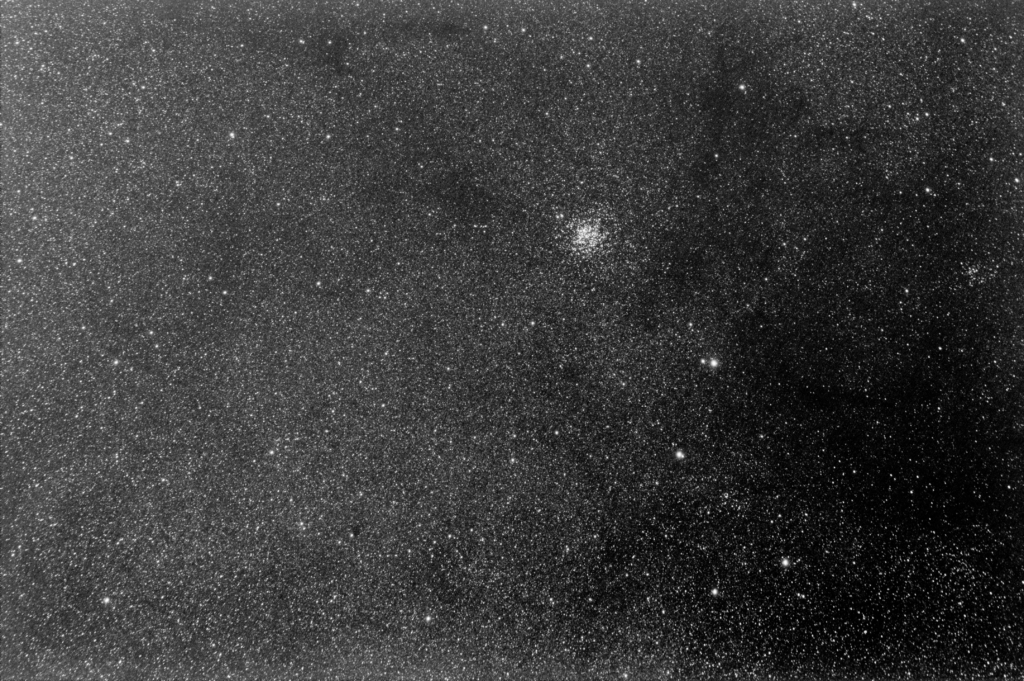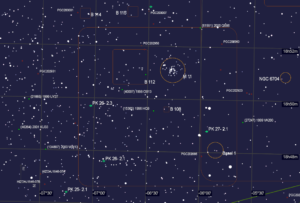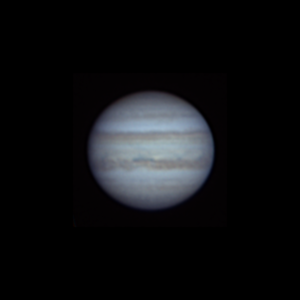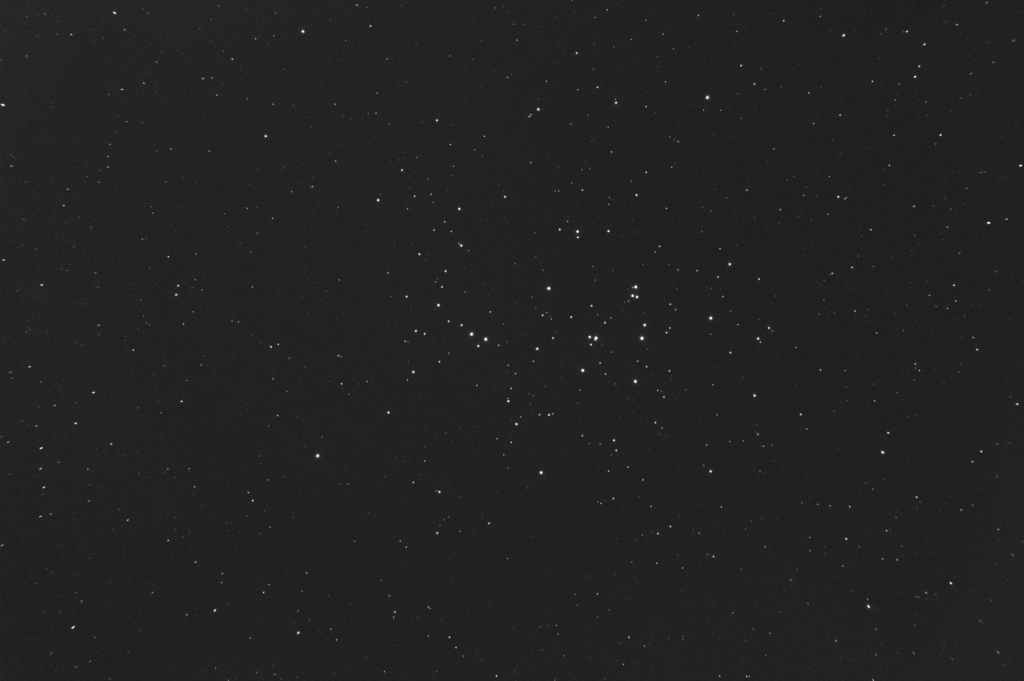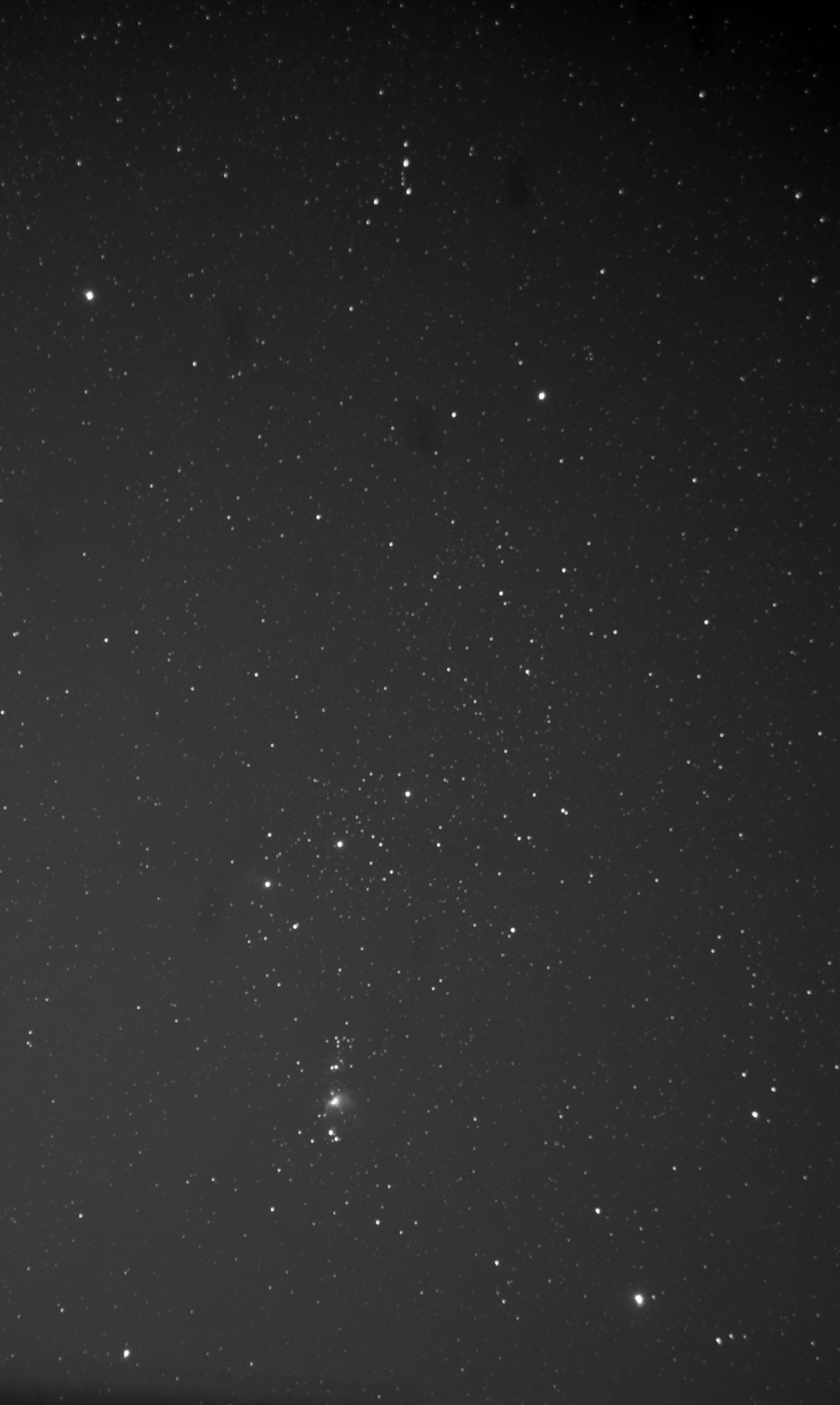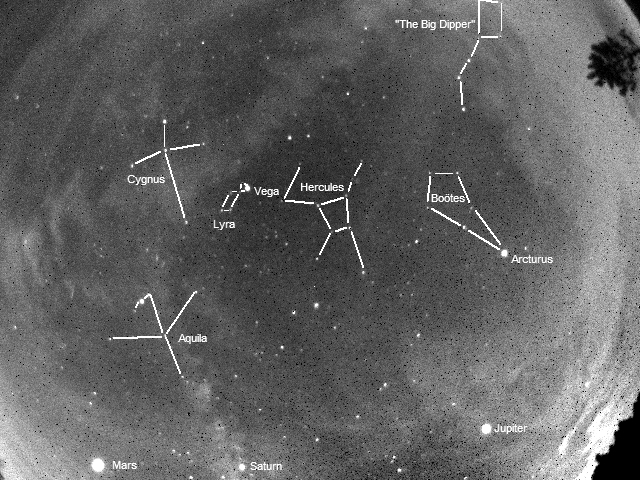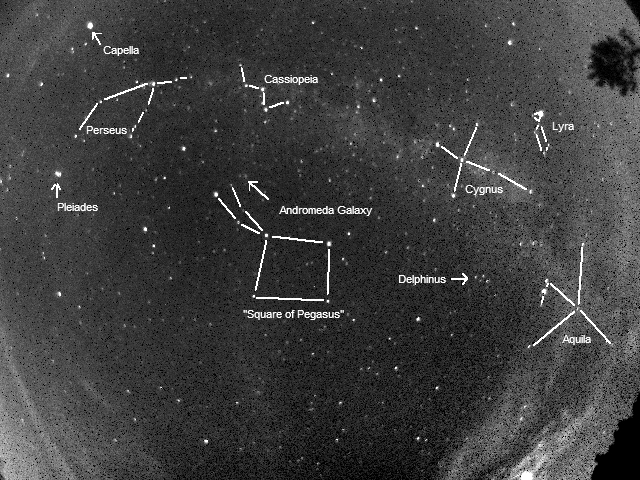While waiting for my deep space camera to be repaired, I’ve been busying myself with two alternate efforts. One, planetary imaging since Saturn, Jupiter and Mars are in the morning sky. Second, developing the process of using a smaller telescope and a new, to me, deep sky camera. The second effort is the subject of this post.
I’ve always wanted the ability to image larger portions of the sky without resorting to mosaicking smaller images into one larger image. My normal deep sky setup’s FOV is only 24′ (arc minutes) by 16′. This is great for asteroid astrometry but a real pain to get something as large as the Pleiades (M 45) for example.
I have a wide FOV short tube 80mm f/6.0 apochromatic refractor. Paired with a 20-year-old STL-11000M CCD camera, I can now get a 4.3° x 2.8° FOV. So, I am, since I have the time, developing the procedures I need to use this imaging system effectively. Here is one of my first attempts.
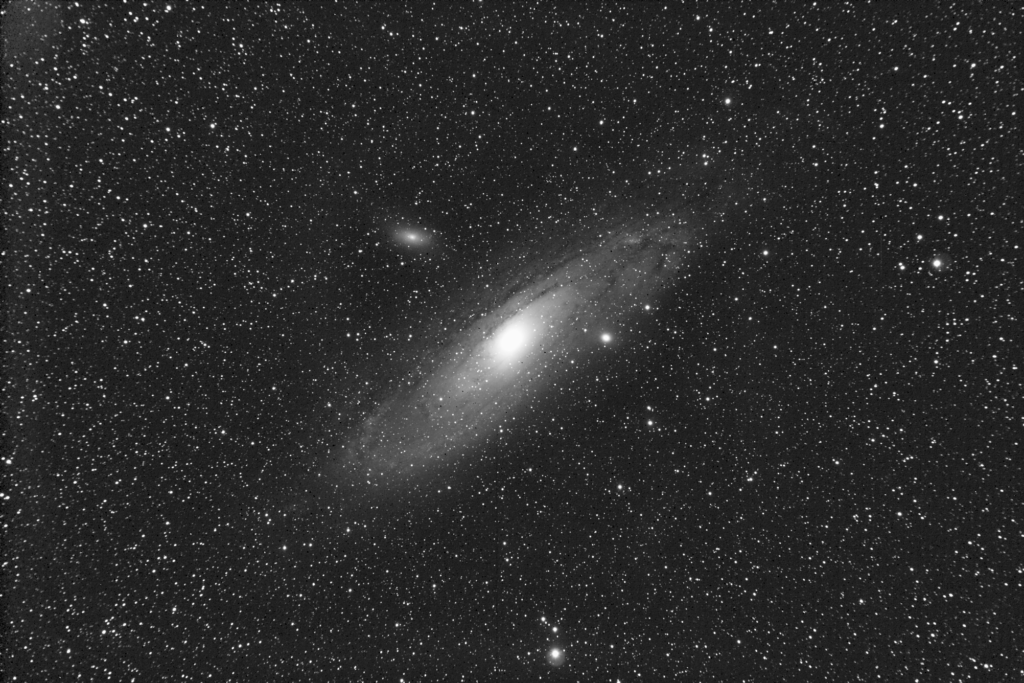
M 31 (The Great Andromeda Galaxy) [L: 30x60s] (Mouse over for labels)
This is of course, M 31 – a large spiral galaxy located in the Andromeda constellation. Located 2.5 million light years away, this is the furthest object that can be seen naked eye. You need a clear dark night, but even I have seen the bright core of this galaxy.
Mousing over the image will show labels for several objects associated with M 31. M 32 and M 110 are small satellite galaxies. These are gravitationally bound to M 31 in the same way the large and small Magellanic Clouds are gravitationally bound to the Milky Way. NGC 206 is a large star cloud and is one of the largest and brightest star forming regions in the nearby group of galaxies which includes the Milky Way.
